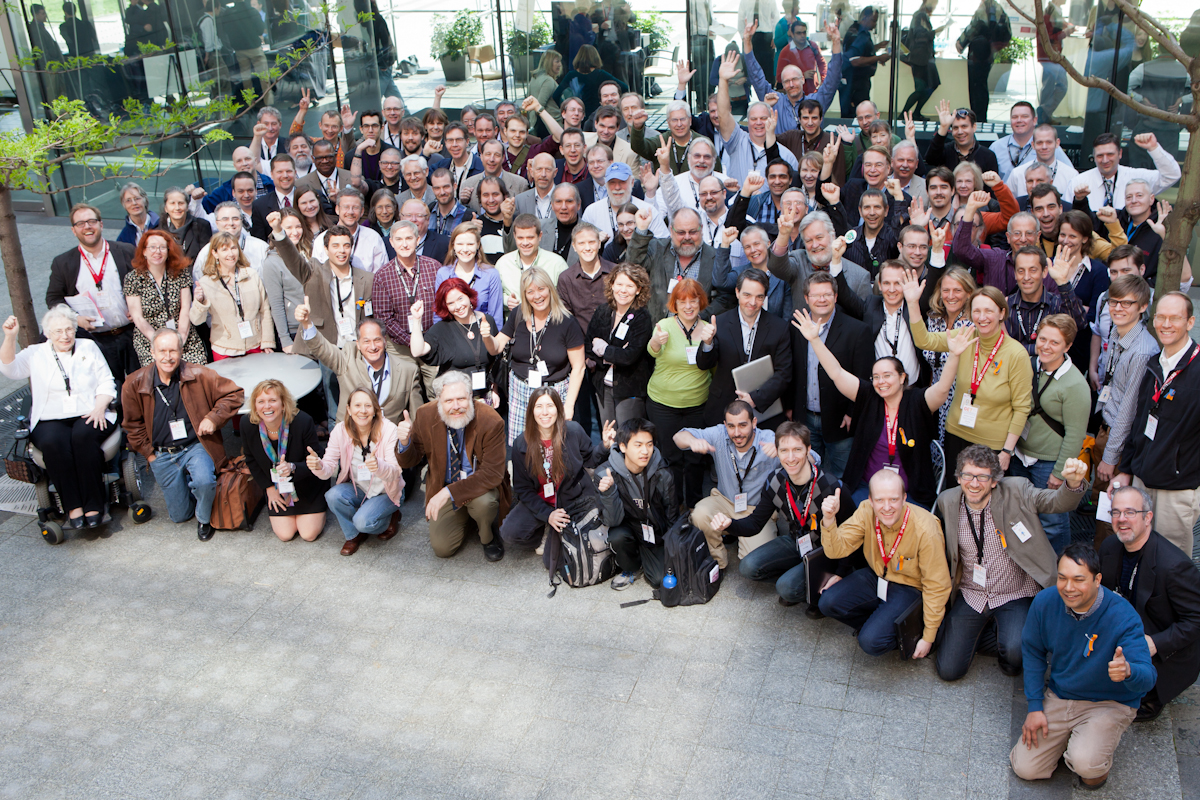Daniel Vorhaus is an ethical and legal advisor to the Personal Genome Project, Editor of the Genomics Law Report and an attorney with Robinson Bradshaw & Hinson.
More than six years ago, I read a piece in Scientific American written by George Church entitled “Genomes for ALL” (pdf). Most of the article was devoted to the rapid progress of next-generation DNA sequencing technologies. But on the next to last page was a brief description of the Personal Genome Project, an audacious new project that aimed to recruit volunteers to provide genomic and phenotypic data and, then, to do something unexpected with those data: publish them for all the world to examine.
I was inspired by the project’s audacity. I was also a law school student with time on his hands. I immediately wrote to George and offered to help.
Fast forward six plus years to April 2012 and the Personal Genome Project’s third annual GET Conference. In the intervening time, the PGP had grown from one participant (George) to well over 1,000 enrolled and active participants, more than 100 of whom attended the GET Conference in person. And after years of revising enrollment exams and consent forms, negotiating IRB reviews and sponsorships and developing sample collection protocols and project management software, the Personal Genome Project had exploded off of the page and into the hallways of Harvard Medical School.
At one point in the middle of the conference I found myself surrounded, quite literally and for the first time, by the PGP. As all of the PGP participants and staff gathered together in a Harvard Medical School courtyard for the group photo*, I stopped to consider the situation: in less than half the time it took to sequence the first human genome, George’s audacious idea – the Personal Genome Project – was an idea no longer. This was the photographic proof. I was inspired all over again.
[caption id="attachment_469" align="aligncenter" width="600"] April 25, 2012. PGP participants at the 2012 GET Conference in Boston MA. * Photo credit: Mike Dravis and PersonalGenomes.org, CC-BY-SA[/caption]
April 25, 2012. PGP participants at the 2012 GET Conference in Boston MA. * Photo credit: Mike Dravis and PersonalGenomes.org, CC-BY-SA[/caption]
Much more than the photo above, the frenetic pace of the conference and the myriad activities for PGP participants attending in person attests both to how far the project has come, as well as to how many exciting developments wait just around the corner. Last week, in the space of mere hours PGP participants were invited to:
- donate blood, which was immediately shipped off to produce whole-genome sequences and immortal cell lines in a national biobank;
- swab themselves repeatedly with Q-tips, as part of a study of the diversity of microorganisms on and in the human body;
- participate in a variety of other phenotyping activities, including facial expression mapping, sweat gland density measurement and daily activity measurement (through the use of distributed pedometers);
- engage the PGP staff directly in a participant-only update meeting and Q&A; and
- connect directly with many of their fellow PGP participants, in both scheduled and informal breakout sessions throughout the day.
Many participants availed themselves of all of the above activities, and in the weeks and months to come the PGP will be returning more data (genomic, microbiomic, phenotypic) to more participants than ever before.
As we look forward from this year’s wonderfully successful GET Conference, we want to set our sights even higher for next year. Our goal for the 2013 GET Conference is to have even more PGP participants attending, and to see them engaged in an even broader array of the public and participatory research efforts that make the PGP unique.
Getting to that point will take lots of work, and we would welcome your help. If you are a PGP participant, please contact us and share your ideas for next year’s GET Conference (to be held April 25th and 26th in Boston, MA). Whether or not you’re a PGP participant, you can also help us to build on the momentum of this year’s GET Conference by volunteering or by donating.
With your help, we can continue to accelerate the work of turning this audacious idea into reality!